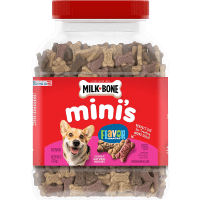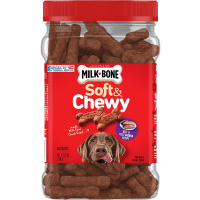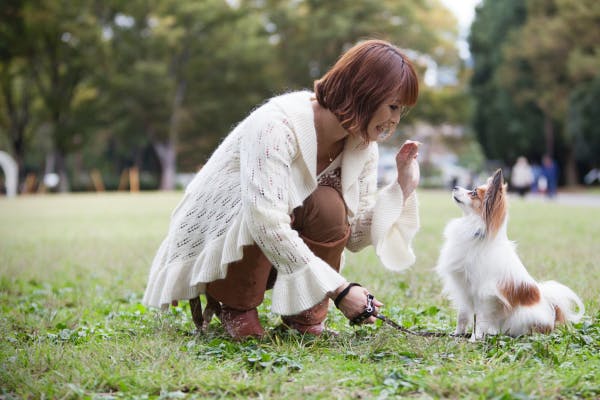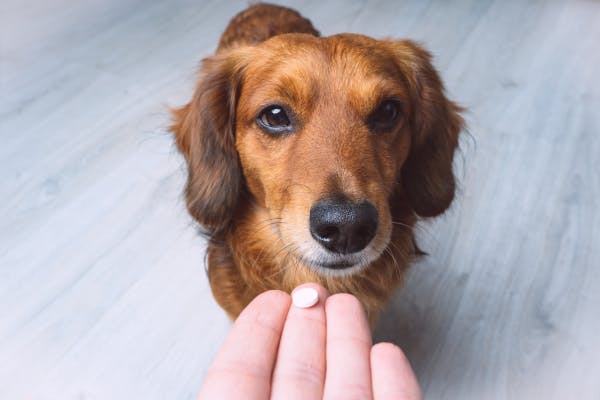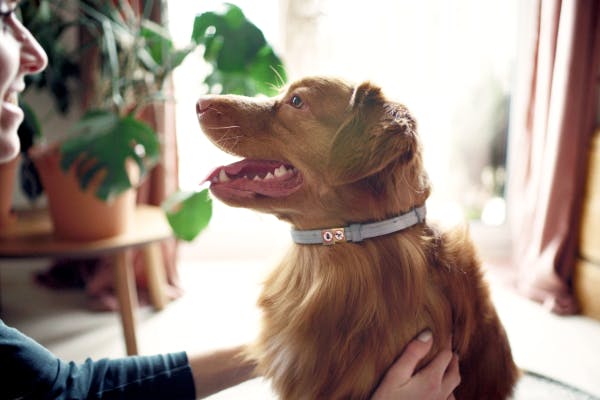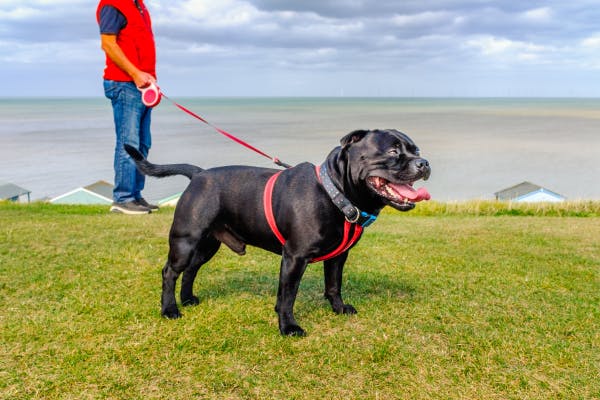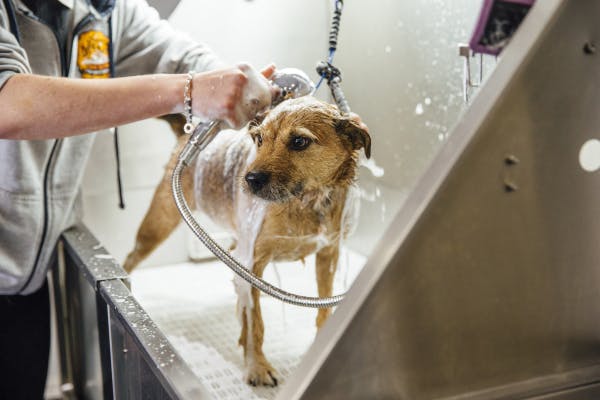learn about dog training treats
How to Choose the Perfect Dog Training Treats: Tips and Tricks for Success
Choosing the perfect dog training treats involves understanding your dog's preferences, ranking treats based on their value, and selecting small, soft, and aromatic treats. Alternatives to food treats include toys and praise. Gradually reduce treats in training and use long-lasting treats for crate training and relaxation.

Dog training treats play a crucial role in teaching pets good behavior and maintaining their motivation during training sessions. To effectively train your dog, it is essential to choose the right kind of treat. Treats encourage positive behaviors, increasing the likelihood that your dog will repeat them in the future. By using the appropriate treats in the correct manner, you can make learning an enjoyable and rewarding experience for your dog.
- The Importance of Dog Training Treats
- Finding Your Dog's Favorite Treats
- When to Use High-Value, Medium-Value, and Low-Value Treats
- Selecting Small, Soft, and Aromatic Treats for Training Sessions
- Alternatives to Food Treats: Toys and Praise
- How to Gradually Reduce Treats in Training
- Avoiding Overfeeding: Keeping Your Dog's Health in Mind
The Importance of Dog Training Treats
Dog training treats play a crucial role in teaching pets good behavior. They help maintain a dog's motivation and interest during training sessions. To effectively train your dog, it is essential to choose the right kind of treat.
Treats encourage positive behaviors, increasing the likelihood that your dog will repeat them in the future. They can also serve as a distraction or reward when teaching new commands or practicing specific skills. By using the appropriate treats in the correct manner, you can make learning an enjoyable and rewarding experience for your dog.
It's vital to determine which type of treat your dog prefers. There are high-value treats that are moist and smelly, medium-value treats that are dry or semi-wet, and low-value treats that are crispy and dry. Each type serves a different purpose in training, so understanding their function is key to successful dog training.
Finding Your Dog's Favorite Treats
To enhance the effectiveness of dog training, it's important to know what a dog likes and how to rank different types of treats. Dogs have varying preferences, so offering the right treat can keep them excited and eager to learn.
You can discover a dog's preferences by observing their reactions when given different kinds of treats. Some dogs might favor soft and smelly ones, while others might prefer crunchy ones. Experiment with various flavors like chicken, beef, cheese, or turkey to determine which one they enjoy most.
Ranking treats involves assigning scores based on how much a dog likes each one: high-value (moist/smelly), medium-value (dry/semi-wet), or low-value (crispy/dry). High-value rewards should be used when teaching new skills or in situations with many distractions because these will capture their attention most effectively.
Medium-value rewards should be given more frequently than high-value ones but only when dogs perform commands adequately, even if not perfectly every time; these can be used with some distractions present.
Low-value rewards are suitable when a dog executes a command but not exactly as desired. In these instances, adjust the training method or reduce distractions before continuing with the session. Regular dog food can also serve as a low-value reward.
best dog training treats
- our rating98 out of 100
- our rating98 out of 100
- our rating96 out of 100
When to Use High-Value, Medium-Value, and Low-Value Treats
Understanding when to use different types of treats is crucial for effective dog training. Each treat category serves a specific purpose in teaching behaviors, maintaining motivation, and managing distractions.
High-value treats are highly appealing and excellent for capturing a dog's attention in challenging situations or when learning new behaviors. Utilize them when your dog faces numerous distractions or requires extra motivation to follow a command, but only as necessary.
Medium-value treats help sustain motivation without providing excessive rewards or causing dogs to lose interest in training. Use these more frequently than high-value ones but only for reinforcing known behaviors.
Low-value treats function as small rewards for partial success or if a behavior isn't quite right yet. They can indicate that adjustments are needed before progressing in training. Sometimes low-value treats can be regular food, so they receive a reward without additional calories.
To maintain interest and motivation, offer various treats within each category during training sessions. Keep in mind that every dog is unique, and their preferences and reactions may change over time. Adapt your use of high-, medium-, and low-value treats based on your pet's needs to make the experience more successful and enjoyable for everyone involved.
Selecting Small, Soft, and Aromatic Treats for Training Sessions
When choosing treats for training sessions, it's essential to select small, soft, and strong-smelling options. These treats help maintain a dog's interest and focus during training. Here are some tips for finding the ideal treats:
Size: Opt for tiny treats that dogs can consume quickly during training to minimize distractions. Pea-sized treats work well for large dogs, while even smaller ones are suitable for small dogs.
Texture: Soft treats are preferable for training because they're easier and faster for dogs to eat than crunchy ones. They also tend to have a stronger smell, which dogs find appealing.
Aroma: Treats with a potent smell are more attractive to dogs due to their excellent sense of smell. Aromatic treats help maintain a dog's attention during training and motivate them to perform better.
Quick consumption: Treats that can be eaten rapidly allow dogs to concentrate on learning instead of eating during training.
Search for small, soft, and aromatic treats made with natural ingredients without artificial additives or fillers. Single-protein treats or those made with simple ingredients like chicken, beef, or fish are excellent choices. Consider your dog's dietary needs and allergies when selecting treats.
To keep your dog engaged during training sessions, use different types of treats so they don't become bored with the same reward—this maintains focus while making training more enjoyable.
Alternatives to Food Treats: Toys and Praise
Toys and praise provide excellent alternatives to food rewards when training your dog—each has unique benefits that help sustain enthusiasm throughout the session:
Toys: Many trainers use toys as an alternative reward in dog training due to their innate playfulness. Select toys suitable according to size, breed, and interests. Some dogs may prefer squeaky toys, while others might enjoy chasing a ball or playing tug-of-war with a rope. A variety of toys keeps dogs engaged and motivated during training. To effectively incorporate toys into practice, present the toy after the dog performs the desired action. For example, to teach a dog to sit, hold the toy above their head, and once they are seated, commence playtime. Similarly, continue rewarding with toys after the completion of other commands as well.
Praise: Dogs often appreciate kind words and affection from their trainers. Offer praise when a dog follows a command or displays good behavior to encourage them to repeat it.
To use praise effectively in dog training, remain consistent with your tone of voice and phrasing. Use clear, concise commands followed by positive reinforcement when the dog obeys. Gentle petting or soft pats can also serve as praise—combining verbal reinforcement with physical touch strengthens the bond between trainer and dog while promoting good behavior.
Observe each dog's preferences and comfort levels regarding touch—some may enjoy being petted in specific areas while others might be less receptive to physical contact. Monitoring their body language helps trainers tailor their approach accordingly.
How to Gradually Reduce Treats in Training
Gradually reducing treats is crucial for ensuring dogs obey without always expecting food rewards—it's vital to distinguish between reinforcement (rewarding after the correct action) and bribery (offering a treat beforehand). To avoid bribery, hide treats until after they've performed the desired task.
Slowly transition from giving treats every time they perform correctly by providing them randomly for exceptional performance. This way, dogs will remain obedient without expecting rewards consistently.
Before reducing treat frequency, ensure your dog thoroughly understands what you want them to do—practice in various environments for optimal comprehension before giving fewer treats.
As you decrease treat frequency, maintain consistency in hand signals and verbal commands. Additionally, request better responses before rewarding. This helps dogs adjust to receiving fewer treats during sessions.
It's not necessary to stop giving treats altogether. Instead, provide them occasionally at random intervals. By incorporating other rewards, such as playtime together, trainers can create a well-rounded training experience without solely relying on food incentives.
Avoiding Overfeeding: Keeping Your Dog's Health in Mind
It is crucial not to overfeed your dog to maintain their health and prevent obesity. Overfeeding can cause health problems like diabetes, heart disease, and joint issues. Here are some tips for feeding your dog correctly.
Measure food portions carefully: Use a measuring cup or scale to provide the right amount of food for your dog's size and activity level. Consult your vet about the best portion size for your pet.
Maintain a regular feeding schedule: Feed your dog at the same time every day to aid digestion and prevent overeating. This also helps you monitor their appetite and notice any changes that could indicate a health problem.
Limit treats: Treats should make up no more than 10% of your dog's daily calories. Choose healthy, low-calorie treats and give them sparingly.
Avoid table scraps: Human food can contain excessive calories, fat, and salt, which can cause overfeeding issues in dogs as well as other health problems. Provide only special foods made specifically for dogs to ensure proper nutrition.
Check weight/body condition frequently: Weigh your pet regularly and examine their body shape to ensure they maintain a healthy weight. Adjust the food quantity if necessary to stay within the ideal weight range.
Exercise is essential: Daily physical activity helps maintain appropriate weights and prevents overeating by burning off extra calories. Choose suitable exercises for your pet's age, breed, and fitness level.
Encourage slow eating: Some dogs eat too quickly, which can lead to overeating and stomach problems. Try using a slow feeder bowl or puzzle toy to make them eat more slowly.
Don't leave food out all day: Allowing your dog to eat whenever they want can result in overeating. Provide measured meals at set times instead of letting them eat all day.
Consult your vet: If you're concerned about your dog's weight or eating habits, ask your vet for advice and assistance.
